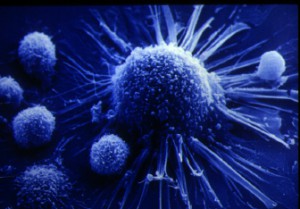The Vaccine:
The candidate HIV vaccine is created to induce Killer T cells. The first phase will be a DNA vaccine grounded on the constituents of the HIV-1 that induces a T cell immune reaction. The DNA is organized synthetically and grounded on constituents of the genes of HIV. The vaccine DNA codes for part of one of the virus genes known as gag, which is directed to induce very strong immune reaction. It also encodes little constituents of other genes that can induce immunity. The DNA cannot create a whole virus and there is NO demand that recipients of the vaccine could become infected from the vaccine. It is created only to induce the immune reaction.
The kind of immunity that the vaccine will induce is known as the cellular immune reaction. The best known immune reaction is the antibody reaction where proteins arranged by white blood cells stick to the surface of viruses and neutralise them, arresting them from spreading in the human cells. Cellular immunity is indirected by T cells (a type of white blood cell) and a particularly significant kind of T cell is the killer T cell. These kill cells that have been infected by viruses such as HIV, before the infected cells can make huge number of new virus. In this way they take under control virus infections and are answerable for treating many virus infections. They fail to take under control HIV infection, because HIV attenuates the immune reaction by infecting other T cells. If the vaccine could induce a strong killer T cell reaction, before the virus invades, that could take under control HIV infection. My Canadian Pharmacy takes an active part in such trials.
The Figure shows killer T cells moving in to kill a larger virus infected cell.
DNA when injected into the muscle or the skin enters a few cells and becomes a cause of them to create the constituents of the virus that induce killer T cells. Because the DNA is created only to induce immunity, the immune reaction is very focussed. But in prior human researches on DNA vaccines, the killer T cell reaction has not been very powerful. Therefore we have created a second constituent, MVA, that strongly magnifies the killer T cell reacton. MVA is a virus that is received from the old small-pox vaccine. It was specially altered so that it cannot be distributed in the body and becomes a cause of no side effects, but still induces strong immune reaction. The same vaccine DNA has been put into this MVA virus. Then when MVA is presented to someone who has been prone by DNA alone (focussing the T cells on the HIV) there should be a very powerful T cell reaction.
We schedule eventually to try the DNA-MVA complex. Nevertheless, before that we have to try each on its own. We will try the DNA first in this experiment. Later this summer we will begin an experiment of MVA alone. Then in the late autumn we will begin an experiment of DNA plus MVA.
These experiments are created to try security and capability to induce the immune reaction. There is no cause to think that the DNA or the MVA will be insecure. Many investigators in animals and prior investigations in humans with similar (but not anti-HIV) vaccines identify that they will be secure, but this has to be examined in human volunteers at some level, before it is utilized on a large scale. Likewise, the power of the immune reaction induced has to be tried in volunteers. It may be obligatory later to adopt the vaccine dose or timing of injections to maximize the immunity induced.
The first experiments will be held in Oxford. Then similar experiments will be held in Nairobi, Kenya. If these are prosperous, the vaccine may be tried in volunteers who are at high risk of HIV infection. In Kenya AIDS/HIV is a great killer disease, infecting men, women and children in all strata of society. The vaccine is grounded on the strain of HIV that is general in Kenya and other countries in East and Central Africa.


